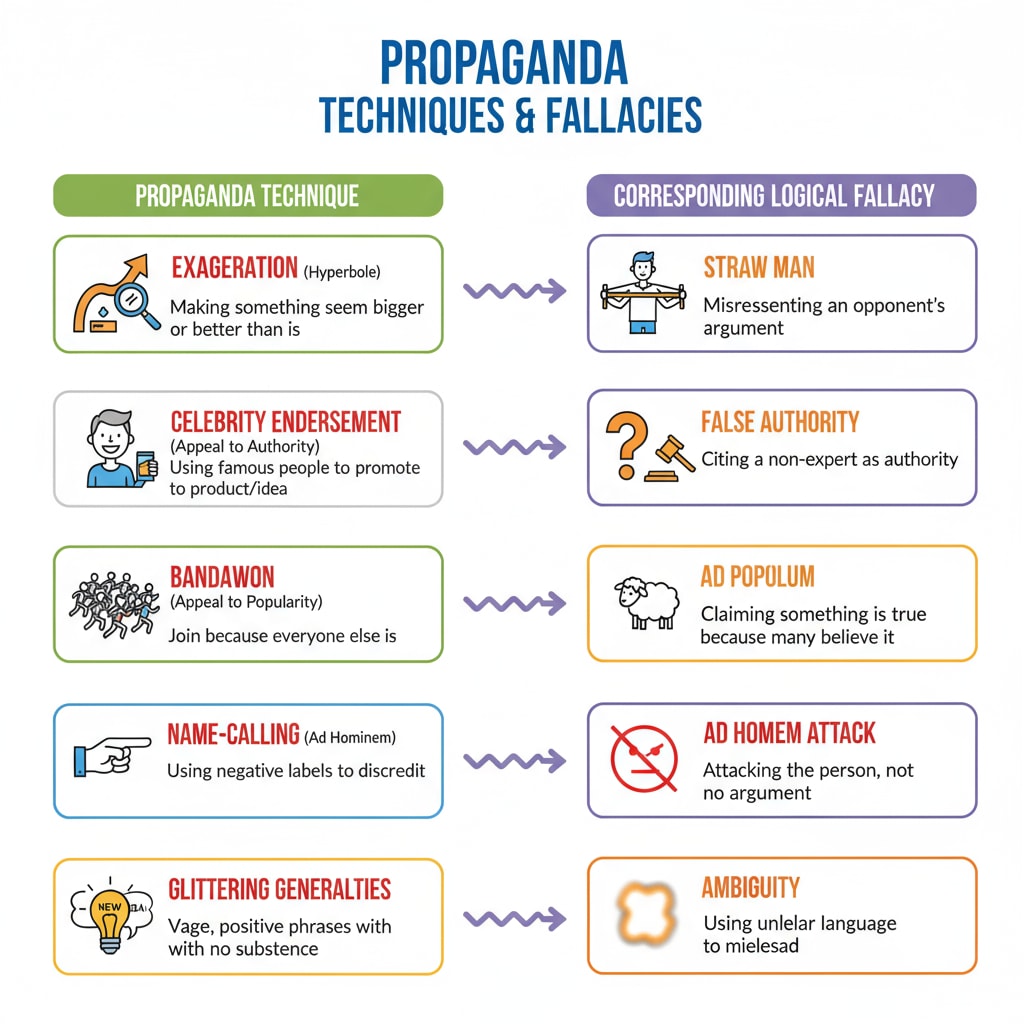In an era rife with an overwhelming amount of information and the spread of false narratives, the concepts of logical fallacies, critical thinking, and propaganda recognition have become more relevant than ever. High school is a pivotal stage in a student’s development, and integrating logic fallacy education into the curriculum is not just beneficial but necessary.

The Foundation of Critical Thinking
Logical fallacies are errors in reasoning that can lead to false conclusions. By learning about them, students build a strong foundation for critical thinking. For example, when students understand the “ad hominem” fallacy (attacking the person instead of the argument), they start to question the validity of statements. As Wikipedia’s page on Critical Thinking states, critical thinking involves analyzing, evaluating, and constructing arguments. Logic fallacy education equips students with the tools to dissect arguments, identify flaws, and form well-reasoned opinions.
Navigating the Propaganda Maze
In today’s media-saturated world, propaganda is everywhere. From advertising to political campaigns, various entities use persuasive techniques that often contain logical fallacies. When students are taught to recognize these fallacies, they can better identify propaganda. For instance, the “bandwagon” fallacy, which suggests that something is true or good because many people believe it, is commonly used in advertising. Understanding this fallacy helps students see through the hype. According to Britannica’s entry on Propaganda, being able to recognize propaganda is crucial for making informed decisions. Logic fallacy education empowers students to be discerning consumers of information.

Moreover, learning about logical fallacies in high school contributes to the development of rational citizenship. Rational citizens are able to engage in meaningful discussions, make informed choices, and hold leaders accountable. By equipping students with the skills to identify logical fallacies, we are preparing them to be active and responsible members of society.
Readability guidance: The article uses short paragraphs to convey ideas clearly. Lists can be used to summarize key points in each section. The proportion of passive voice and long sentences is controlled, and transition words like “for example”, “moreover”, etc. are used to enhance the flow of the text.


